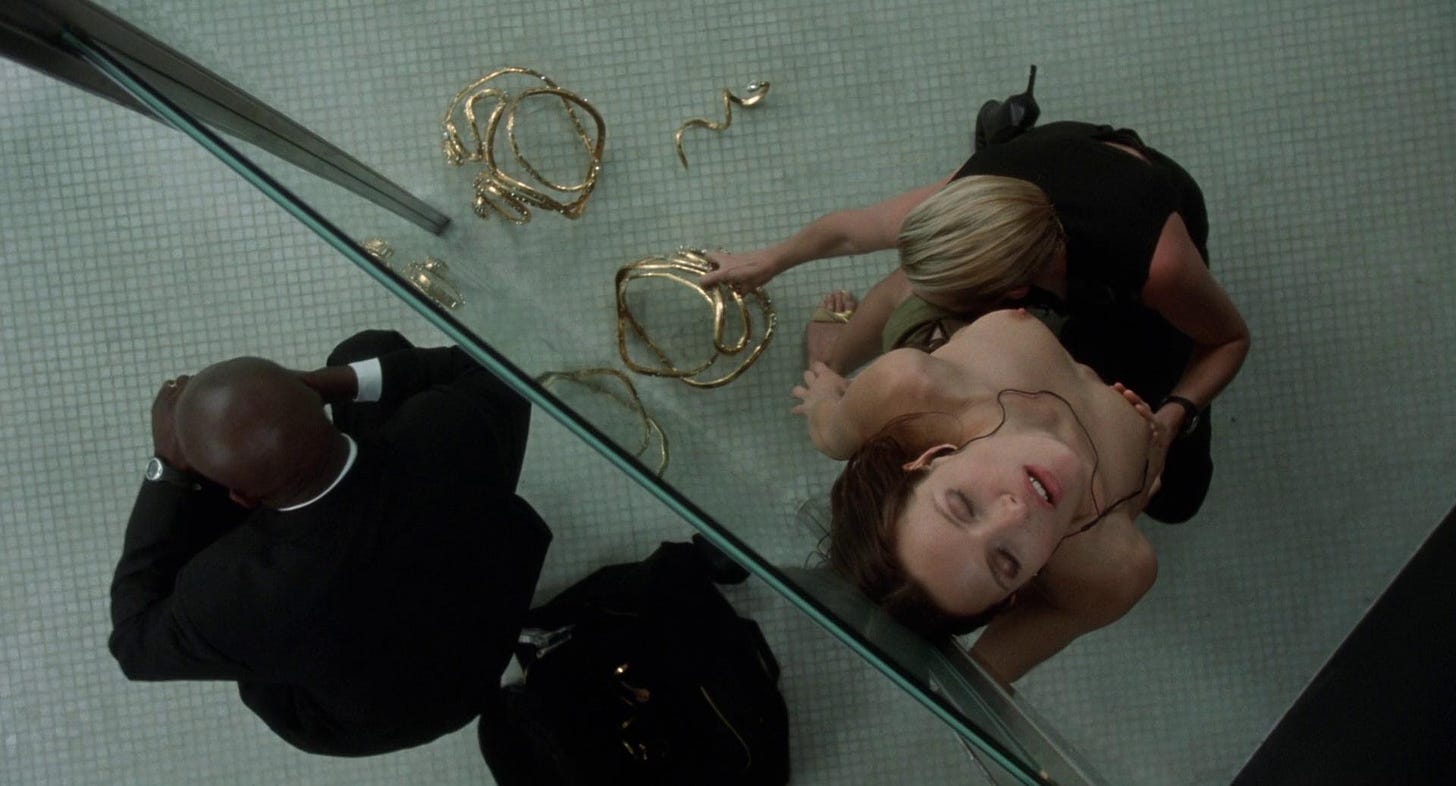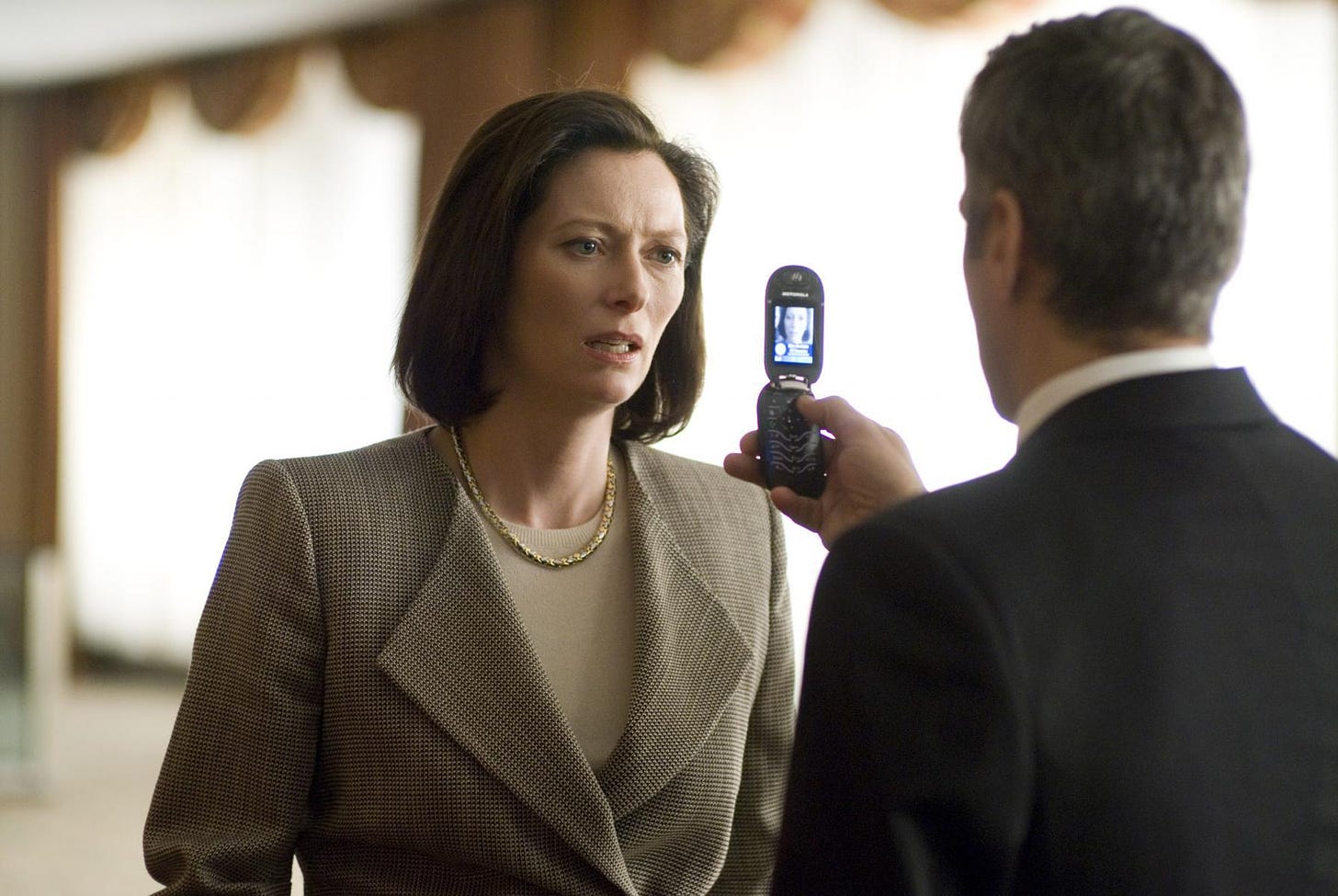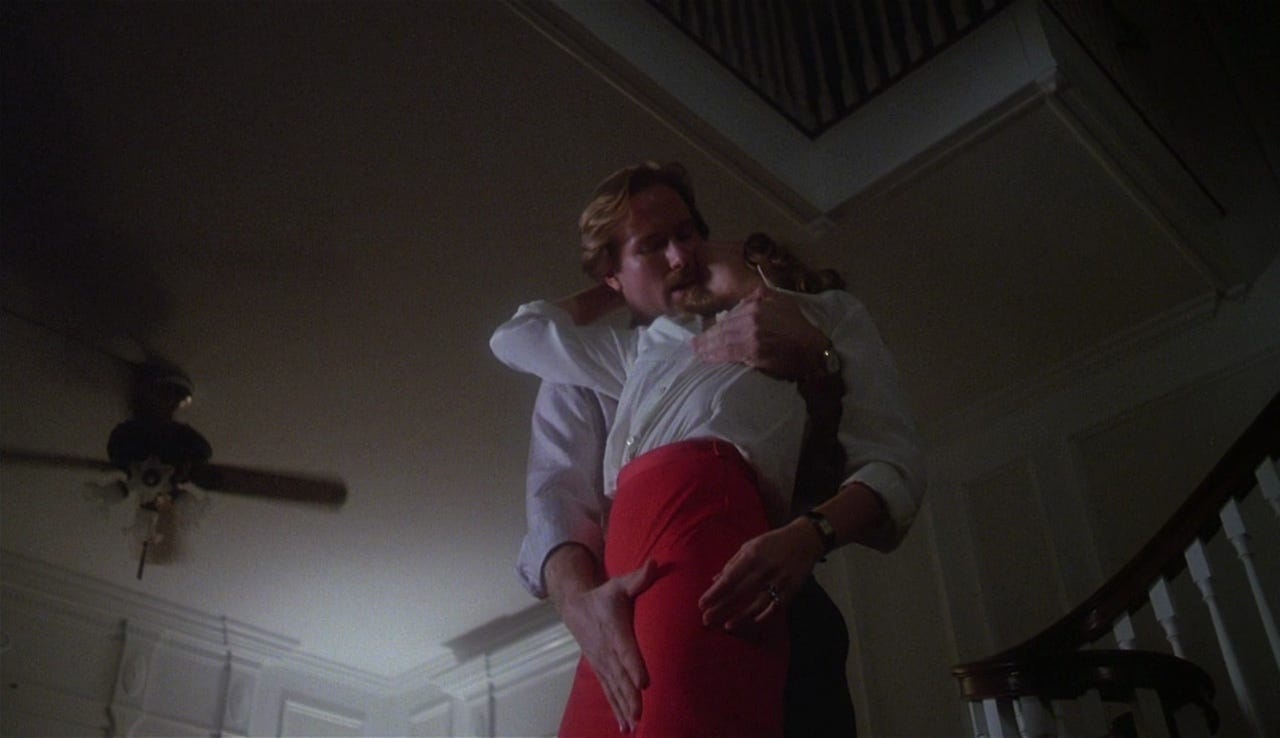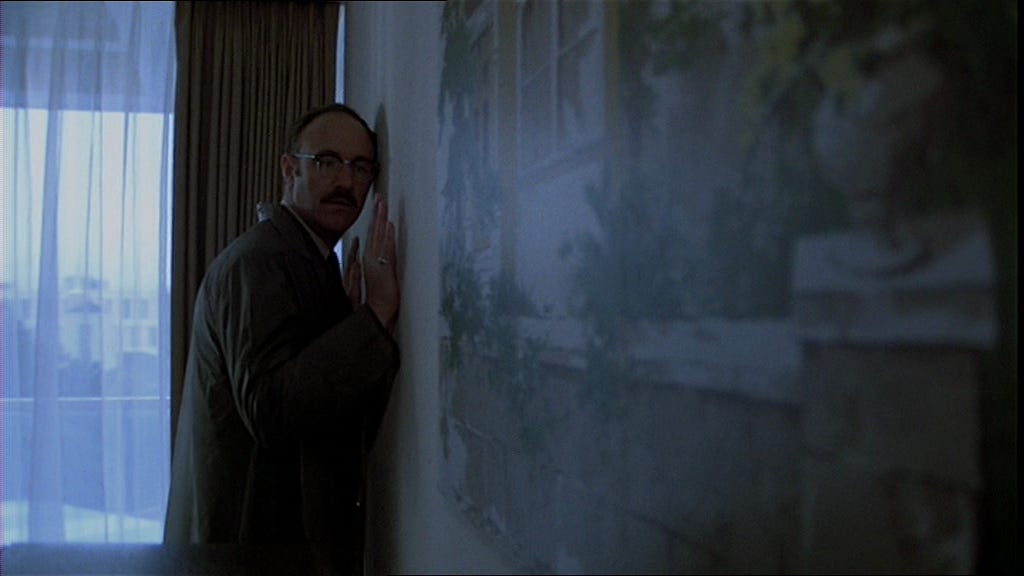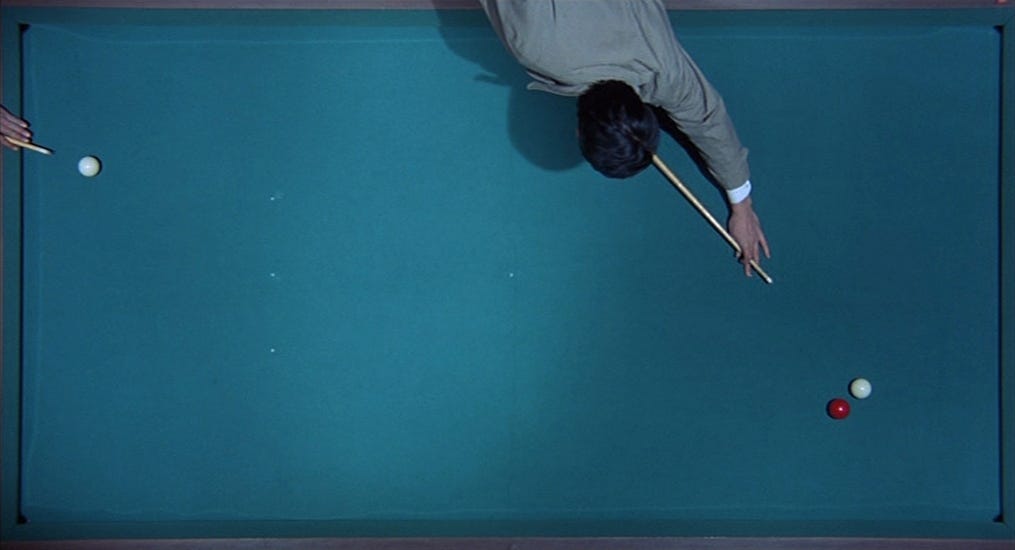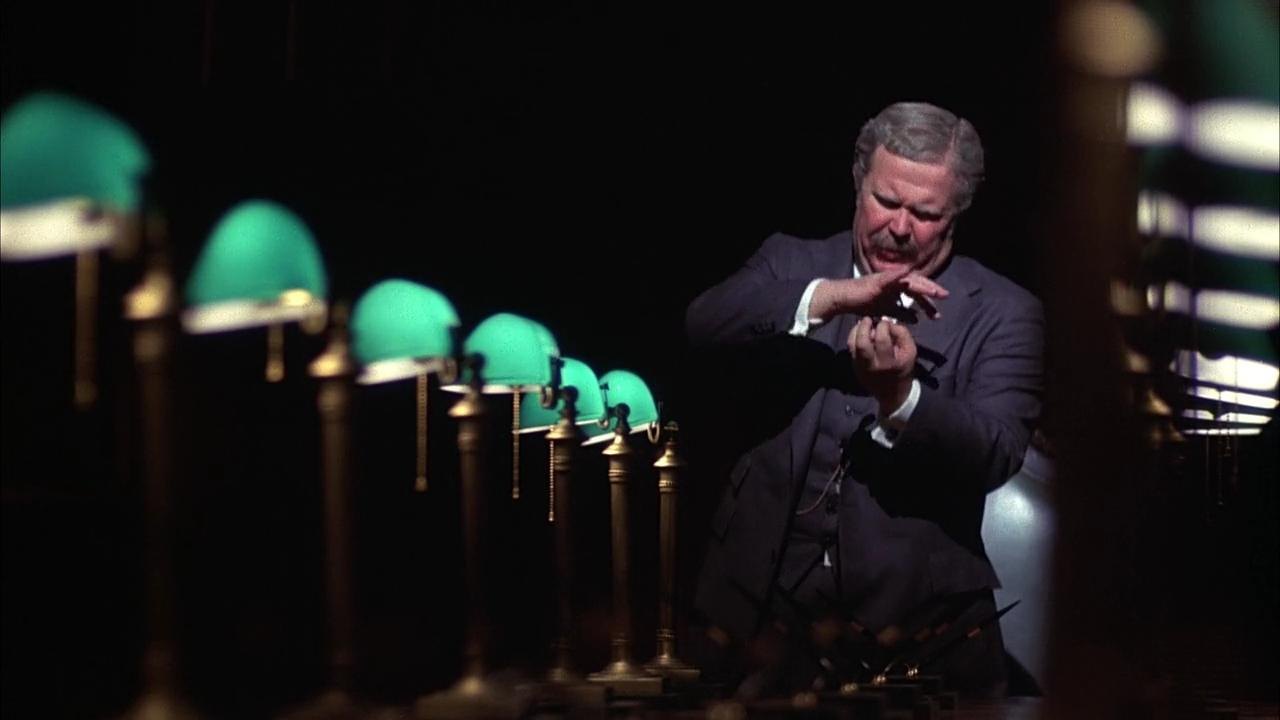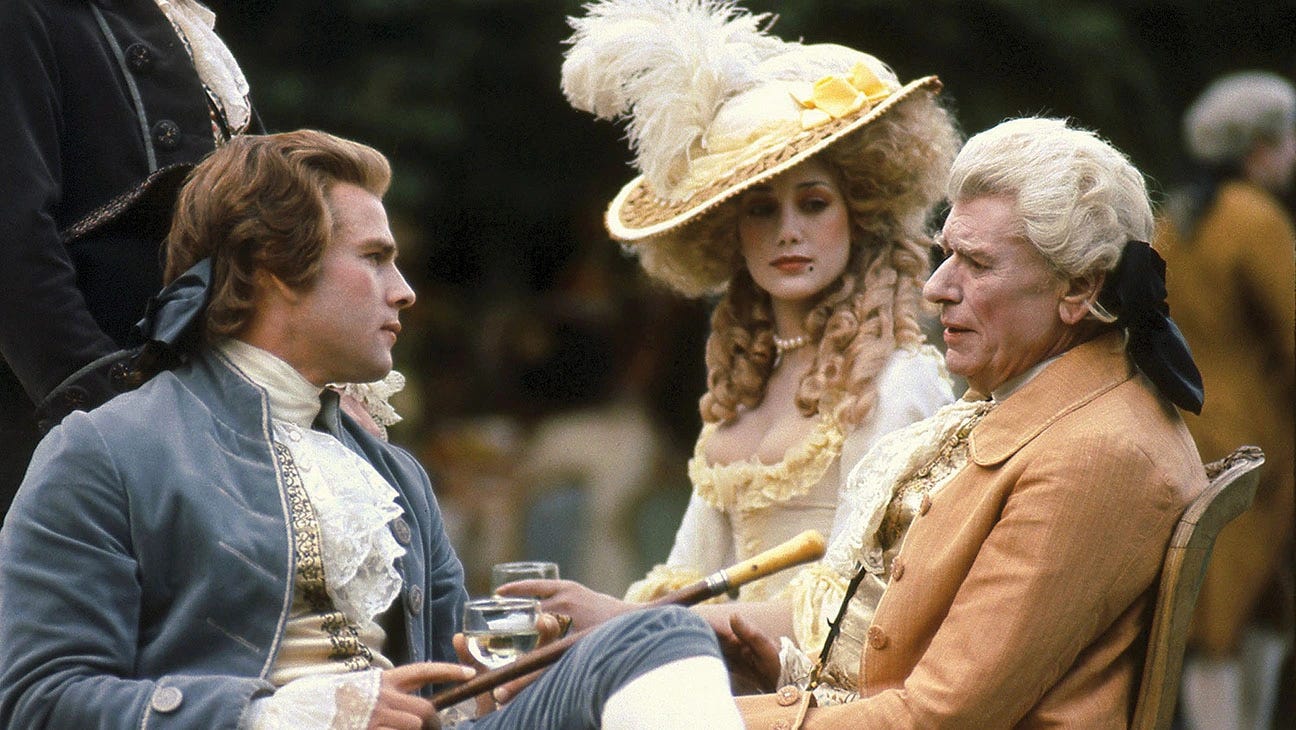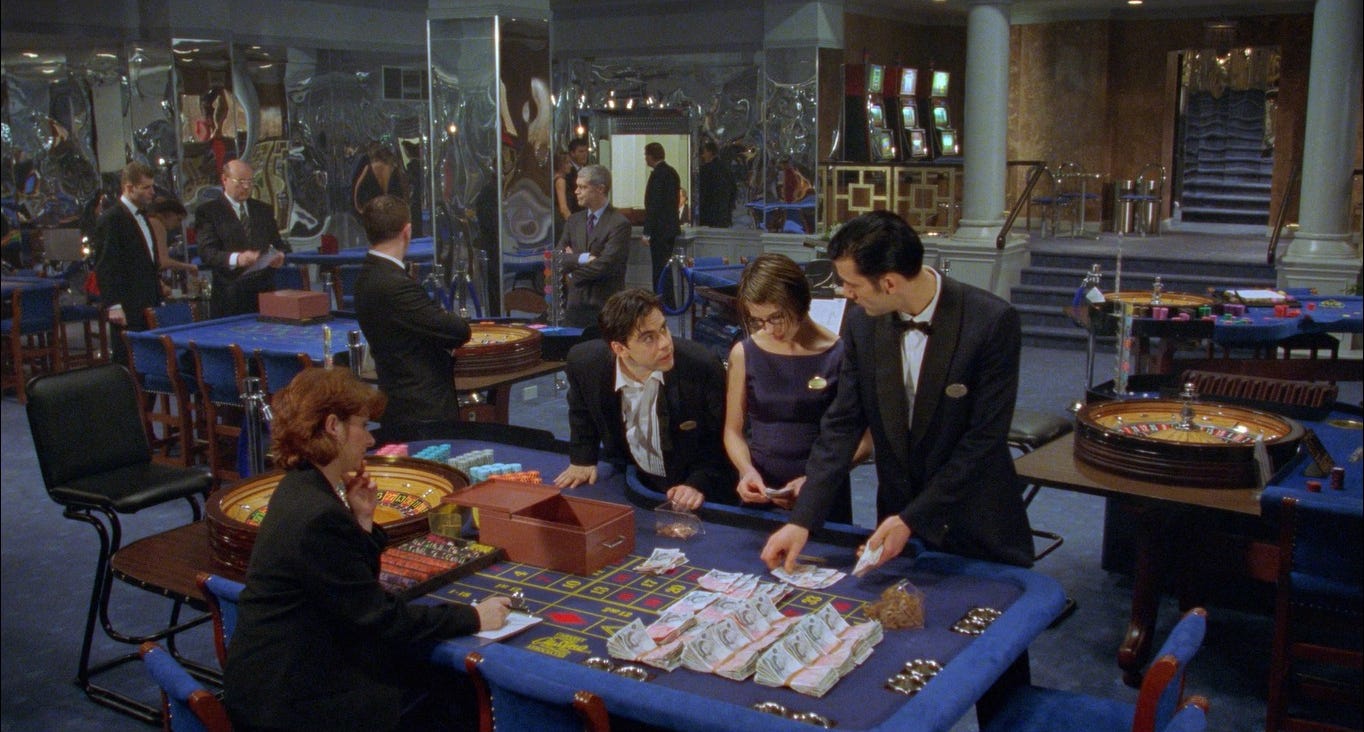These are best movies I watched in 2022. I’m predictable. I love thrillers. Sex, noir, crime, lawyers, suspense. Or a period piece cut dry as the powdered wigs.
Femme Fatale (2002)
I’m a huge Brian De Palma fan. But this is extra yummy, a turn-of-the-millennium box office flop, like Dressed to Kill meets Southland Tales. We pop off with sapphic action in the bathroom at the Cannes Film Festival to seduce the movie-star target of a jewel heist. Antonio Banderas is a paparazzo. The thief becomes an un-photographed diplomat’s wife. There are double-crosses, a supernatural nested narrative, Rie Rasmussen in an amazing pair of camo boots. Banderas’s costar, Rebecca Romijn — who at the time was Mystique in X-Men — sometimes gets flack for her acting, but here she plays the right pitch of blank.
Michael Clayton (2007)
Tilda Swinton is the villain and George Clooney the asshole we’re rooting for in this post-courtroom legal thriller about a multinational agrochemical company trying to cover up knowingly poisoning people. Sidney Pollack was a producer and has a fatherly supporting role.
Body Heat (1981)
A movie about a heat wave I watched during the heat wave this summer. I’d heard about it in an essay from this Hal Foster edited book The Anti-Aesthetic (1983), a throwaway example of at-the-time nostalgic pastiche, the film set in small-town Florida instead of Miami to explain why everything looks like a 1930s noir. William Hurt and Kathleen Turner are the leads while a young Mickey Rourke has a supporting role as a hot bad boy with a moral code.
The Conversation (1974)
A surveillance expert is made paranoid a couple he was hired to record will be murdered. I’ve always wanted to see this film since I read the wonderful book of conversations between Walter Murch and Michael Ondaatje on the art of film editing, called Conversations (2002), and which Murch, a longtime Francis Ford Coppola collaborator, who edited The Conversation, references many times throughout. The book underscores how difficult a feat it was editing the film’s marquee scene.
Le Cercle Rouge (1970)
Police manhunt, crime ballet, bromance, diamond heist. Alain Delon is enigmatic.
Network (1976)
The satire that everyone talks about predicting media today. Faye Dunaway (who won on Oscar) has a great wardrobe of tan and tweed — camel coats, Yves Saint Laurent blouses, belted skirts, and knee-high boots.
Barry Lyndon (1975)
A Stanley Kubrick masterpiece (I don’t care if I sound like the biggest film bro). Apparently Kubrick was obsessed with this era of the Seven Years War because he originally wanted to make a movie about Napoleon, but the studio killed it, and so he ended up adapting this 19th-century picaresque novel The Luck of Barry Lyndon. The commitment to absurdity reminded me of Tristram Shandy, and there was a whole lens invented to achieve the candlelight scenes.
Croupier (1998)
Isaiah Davis, who I watched all these movies with, says he’d only give Croupier an honorable mention. Maybe I have a soft spot for it because Clive Owen plays an aspiring novelist — cue the moody neo-noir voiceover. The plot is more tightly wound than the film first lets on and Owen is a hot sort of vampire, always being doubled and tripled in the casino’s distorting mirrors, spitting monologues about the twisted codependency between gambler and dealer.



